Chagrin Falls Park is a neighborhood in Bainbridge just beyond the border of Chagrin Falls. For many years it was primarily a black neighborhood but today it is more racially diverse. The beginnings of how this neighborhood was formed is consistently misconstrued to this day. The Historical Society frequently receives inquiries regarding the history. We also see and hear a lot of misinformation on social media regarding the history which we constantly try to correct. We do not excuse the racism that exists in the area and the country. Yes, the KKK was active here in Chagrin Falls in the 1920s and 1930s. We cannot deny that, it is our history and we accept that. Many people believe that Chagrin Falls purposely cut Black Americans out of Chagrin Falls by creating Chagrin Falls Park. The Historical Society is here to educate the public on what was going on in Chagrin Falls and the surrounding area, and the true story about how Chagrin Falls Park was formed.
Let’s start with the true story of the county line since that is most common myth that we hear. Back in 1840, the county line ran through the CENTER OF TOWN! The town was exploding due to the development of a variety of industries. Since the village was in two different counties, this created a lot of issues for businesses and land owners.
The Land Swap
THE SWAP in 1841 Cuyahoga County would get a 900-acre parcel of Geauga County in Russell Township and Geauga would get 900 acres of Cuyahoga County in Orange Township.
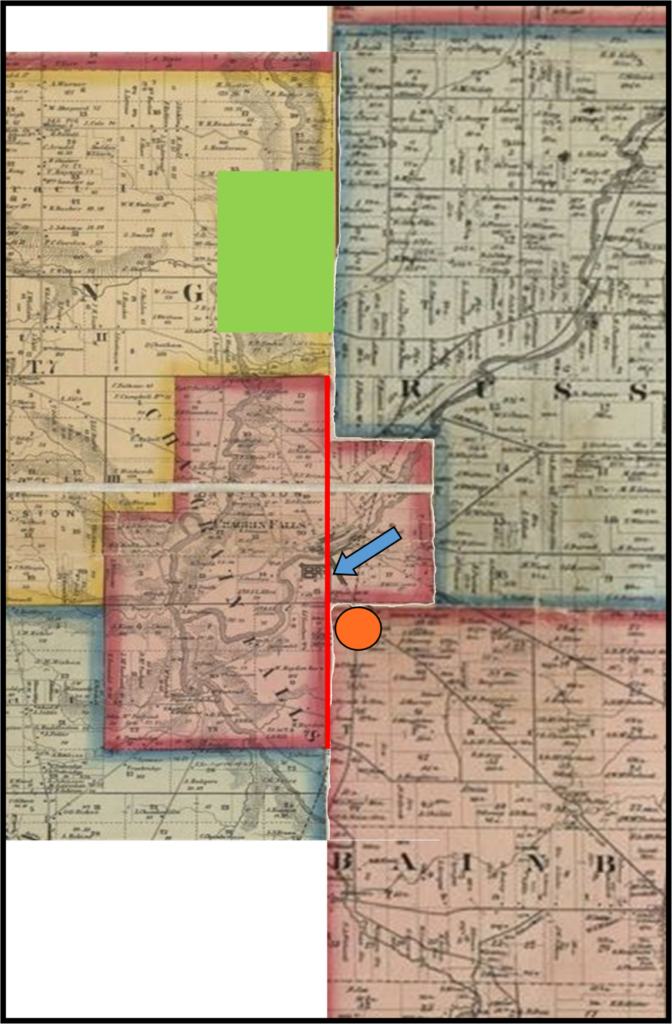
The RED line is the boundary prior to 1841, one side of Chagrin belonged in Cuyahoga County and the other in Geauga County.
The GREEN block is the approximate location of the land that Cuyahoga County gave to Geauga County THEN Geauga gave it back because they did not like the land BUT never asked for their portion back. THEREFORE Chagrin became a unified village.
The BLUE arrow is Triangle Park
The ORANGE circle is approximately where Chagrin Falls Park was created in 1921
To our knowledge, there is no map detailing the actual location of the swapped land. The swap back happened so quickly, a map was probably never even drawn.
The area known at the “allotment” or Chagrin Falls Park, was not developed for another 80 years, and it would be about 90 years before it was populated by African-Americans. Allotment is a term used to describe an area of land that was rented or purchased by the owner. All of the early Chagrin maps are labeled Graves Allotment, Hutchings Allotment, and so on. Those were early Chagrin settlers who owned that property.
Why is it called Chagrin Falls Park if it is not in Chagrin?
We get this question a lot so let’s talk about it. During the winter of 1920/1921 R. G. Gardner sold his land in western Bainbridge Township to the Home Guardian Corporation of New York. They named their proposed development Chagrin Falls Park. Which does not really explain why they chose to use the name Chagrin Falls over Bainbridge, an educated guess would be that Chagrin Falls was a booming town and it was the biggest village that was close. Today, it is common for residents to say they are from Chagrin Falls instead of the township they live in. This is not uncommon for anyone living near a bigger city or well-known town to do.
At this point there is no way to know the discussion that was had at Home Guardian Corporation regarding the name. Home Guardian worked with Samuel Rocker editor of Jewish World, a Cleveland newspaper. If you purchased a 6 month subscription you would receive a deed for a lot in Chagrin Falls Park. A number of people took advantage of the opportunity, and a few even built homes.
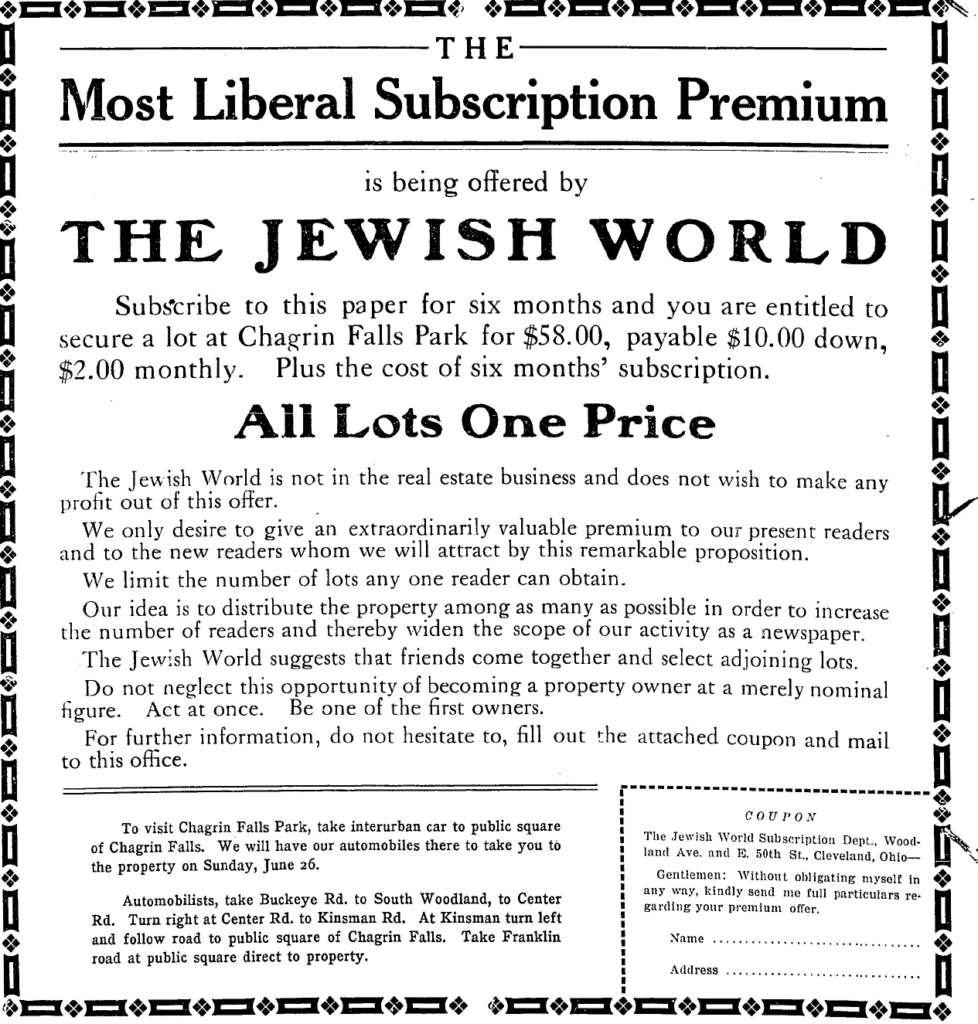
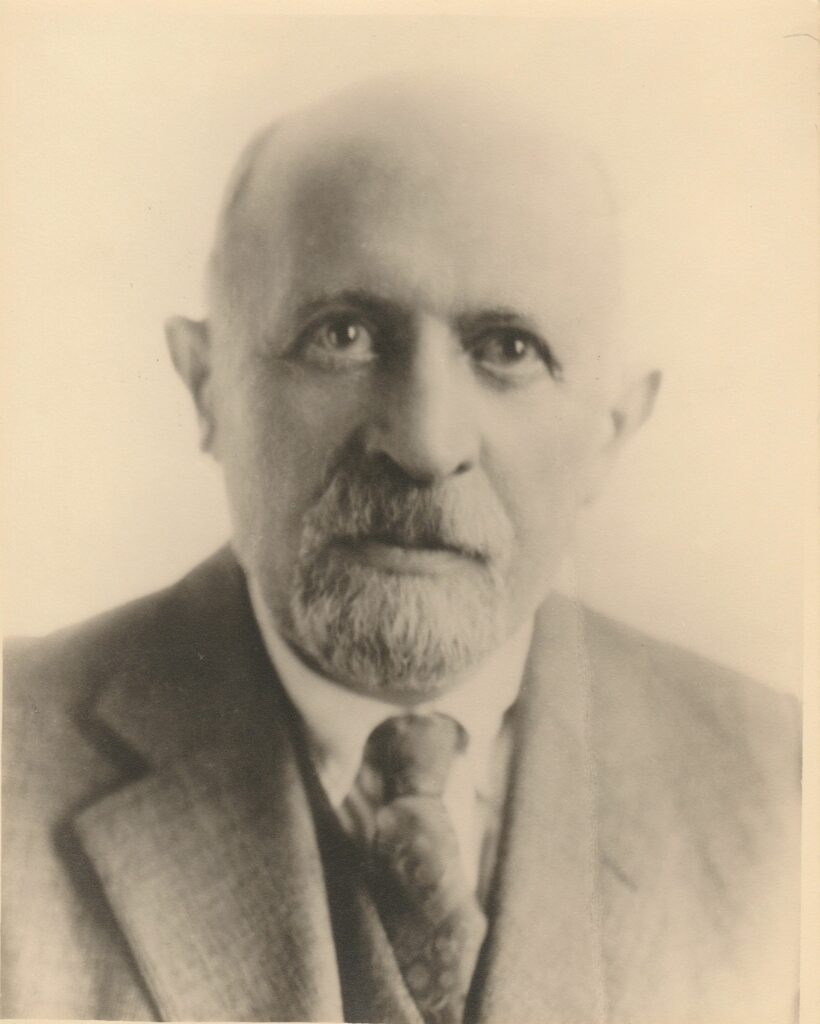
Image found online- https://www.geni.com/people/Samuel-Rocker/6000000006951670181
In 1924, Home Guardian (the company Rocker worked for) sold allotments to Alnola Co., represented in Ohio by Grover W. Brow. He offered the lots for sale to the black community on Cleveland’s East Side.
One older Park resident remembered Brow ripping off everyone by not paying taxes. He sold to black and white people and he ripped them all off. Yet Brow still sold to over 250 different buyers.
Let me rewind for a second to tell you that in 1920, the Henry Furnace Company, located at the edge of the Village recruited black workers from the South. Two of these workers were Albert Bolden and James Phillips. Before 1924 both the Boldens and the Phillips moved to houses in Chagrin Falls Park.
In summary- In the early years, the area was mostly white. Between the foundry workers, Samuel Rocker, and Alnola Corporation these families were living integrated in the Park. Overtime, it became a predominately Black community.
Life in the Park in the 1920s
Most residents had no running water and no electricity. The roads were muddy and impossible to drive on if it rained. The residents who lived in the Park lived a rural life with no modern amenities, they tended gardens and had farm animals.
Many of the early residents had jobs in Cleveland, usually factory work but also working for the City of Cleveland or driving trucks. Other residents had jobs within the Chagrin Valley. The men who worked further away would carpool, take the streetcar or bus. Sometimes it would be easier for the men to stay in Cleveland during the week and come home on weekends.
In 1920s America, it was still common for merchants to refuse to serve blacks. Park residents recall this happening in Chagrin Falls. Of course, not everyone had the same attitudes. There were merchants who served every customer no matter what color their skin. Nonetheless, many residents during Andrew Wiese’s research discussed the discrimination they faced in Chagrin Falls.
There were many residents who had good relationships with the white families in Chagrin Falls. Many white residents played an active role in their churches and civic groups in the later development of the Chagrin Falls Park Community Center.
Education
The education of students who live in Chagrin Falls Park has always been the responsibility of Bainbridge Township (Geauga County). The false narrative that the county line and school boundaries were redrawn to exclude Chagrin Falls Park unfortunately continues today.
By the mid 1930s, children who lived in the Park rode the bus to the Bainbridge Centralized School on Chillicothe Road (State Route 306) near where Bainbridge Township Hall is now located.
In 1936, Park residents petitioned to build a school. 22 Park residents signed a petition “We the undersigned, residents and electors, of the Chagrin Falls Park Allotment in the Bainbridge Township School District, do hereby petition of the Board of Education of said district to construct an elementary school building in or near said allotment and to maintain an elementary school in this building for the convenience of the children in the allotment. Since there are more than 30 children attending the Bainbridge School from this allotment, we feel that it would be more economical and practical to operate an elementary school right in the vicinity of the allotment than it is as at present, to transport these children a considerable distance to the Bainbridge Center School. Then, too, we feel that such a building would be of great value to the residents of the allotments since it could be used for community affairs of all kinds.”




In 1937 a K-8 one room schoolhouse was built. There were concerns at the time about de facto segregation. In 1946, a lawsuit was being filed by the NAACP against the Bainbridge Township school district to eliminate the ‘Jim Crow’ School in the Park. The schools were not re-integrated until the 1960s.
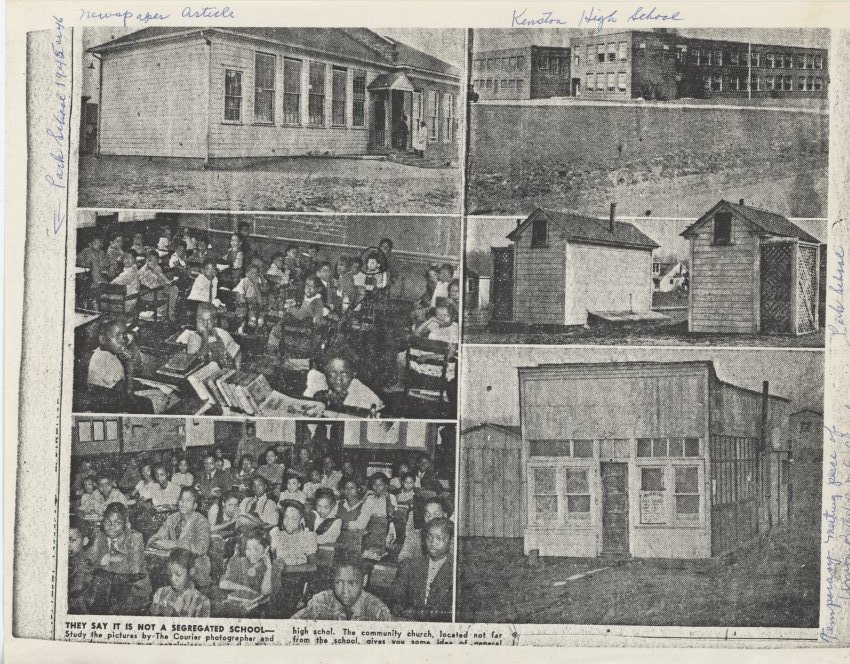
Churches in Chagrin Falls Park
In the late 1920s, Park residents began to meet for worship in a small house on the north side of Woodland Avenue at the corner of Lorain Street (it was owned by Art & Jennie Williams and is no longer standing today). Then they moved to another house which they rented from Mrs. Curry on Geneva St., but it burned down. Then the community decided to build an actual church. By late 1932, or early 1933, the small church on Huron Street was finished. Unfortunately, after a year it burned down. Around the same time, the church congregation divided. In the summer of 1933, a minister came out from Miles Heights, and led worship in a tent on a grassy field south of Woodland Avenue between Kent and Lorain Streets.
The other congregation began to worship in “Turner’s Hall” on Railroad Place. This congregation developed into Zion Hill Missionary Baptist Church. The congregation meeting under the tent formed the Original Church of God.
By the mid-1930s, two church congregations formed– Zion Hill Missionary Baptist Church and the Original Church of God.



This division of churches reflected continued growth and cohesion in the Chagrin Falls Park. Many individual Allotment residents attended both churches at one time or another, and membership fluctuated between the two. The congregations of each church also helped in the building and development of the other whenever their services might be needed.
Living in the Park in the 1940s
During the war, Park residents began to devote time to social activities to keep busy. Residents formed a PTA, philanthropic clubs, Masons and Elks, and there were active members of the NAACP. Like many other women in the United States, women volunteered for the Red Cross. A singing group called the Echo Singers formed and started to raise money through performances in the area, and in Detroit. They used funds to distribute holiday care baskets for the needy or to pay for church and road improvements. Another group of several Park women called themselves the Thrift Sisters began raising funds with barbeques and the sale of baked goods and handicrafts. This was the group that Grace Bolden and Magnolia Strickland were members of. These women would eventually begin the idea of a Community Center.
In May 1940, the Geauga County Republican Club formed. Their meetings were held at Turner’s Hall on Railroad Place within the Park. Republican Clubs were common throughout Cleveland. Park residents formed the Club so that the community might gain better access to County and local politics.
By the late 1940s, there were over 700 residents, 4 churches, a fire department and numerous small businesses.





The Beginning of the Community Center
By the end of the 1940s, the need for youth programming was becoming more apparent.
As previously stated, the women of the community began to raise money to employ someone to do summer programming. They received donations from their employers if they worked in one of the large homes in the Chagrin Valley, donations from Chagrin Falls residents, and from all over the area through picnic fundraisers held by the local Republican Club.
By early 1950, they hired a young Army veteran named Edward Bowman to run their first summer recreation program in the school building. Over 100 children registered, activities included handiwork, Bible stories, music, and a variety of sports activities. All activities were run by residents of the Park. Eventually, the residents of the Park and a dedicated group of individuals from the surrounding communities began working towards fundraising for a larger space. The community raised funds for a building that used to house a mink farm.
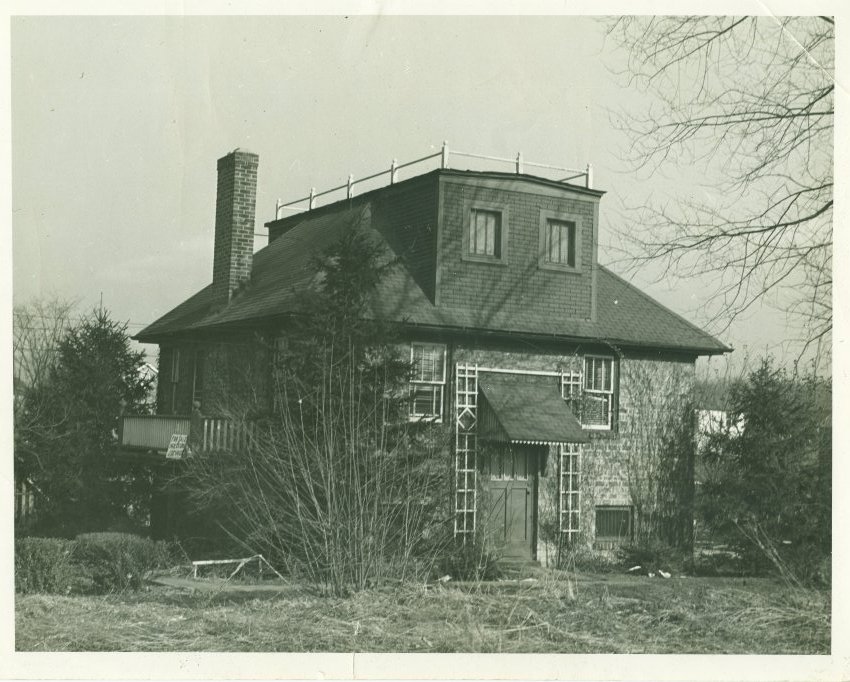
Chagrin Falls Historical Society & Museum Photograph Collection, 2016.FIC.14.
In the early 1950s Chagrin Falls resident Judge William K. Thomas, a Geauga County Common Pleas Judge, along with Reverend John Townsend and Chagrin Falls Junior Women’s Club (CFJWC) joined the cause to build a Community Center.
The Chagrin Falls Park Community Center was created as a 501c3 non-profit in 1951. In 1952 the CFJWC received a $10,000 grant from the Kroger Co. The prize money enabled them to create more space for the Community Center and fund more programs.
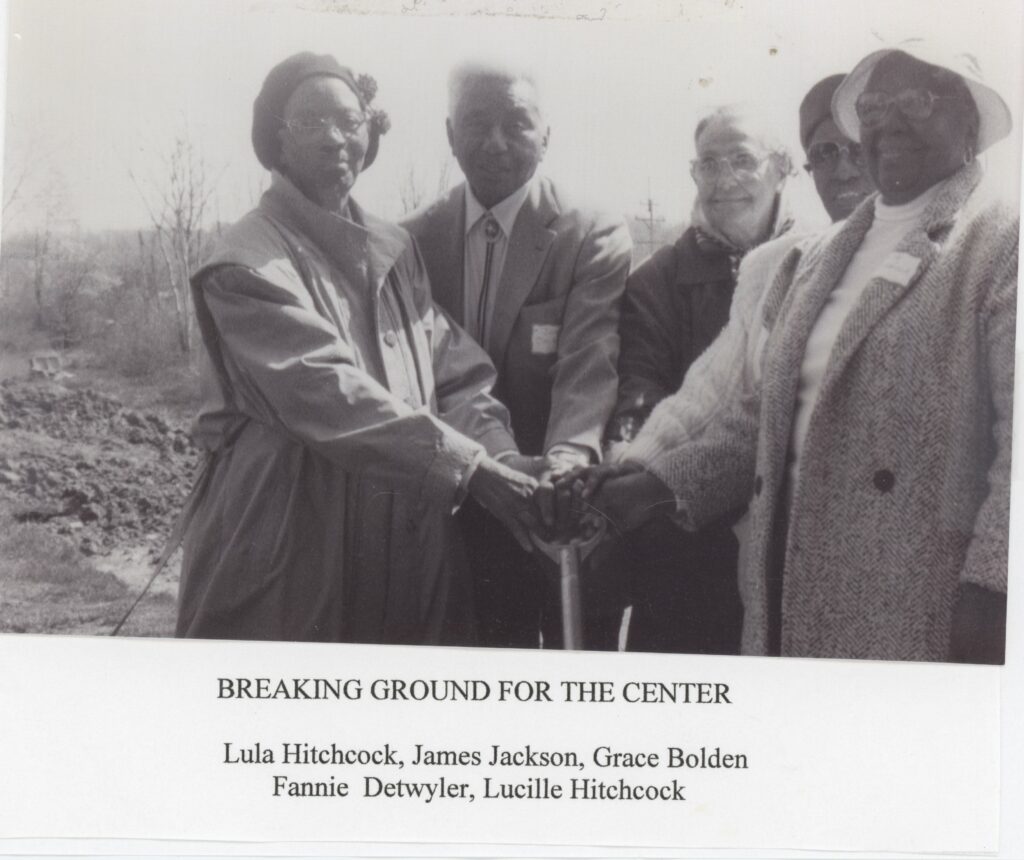
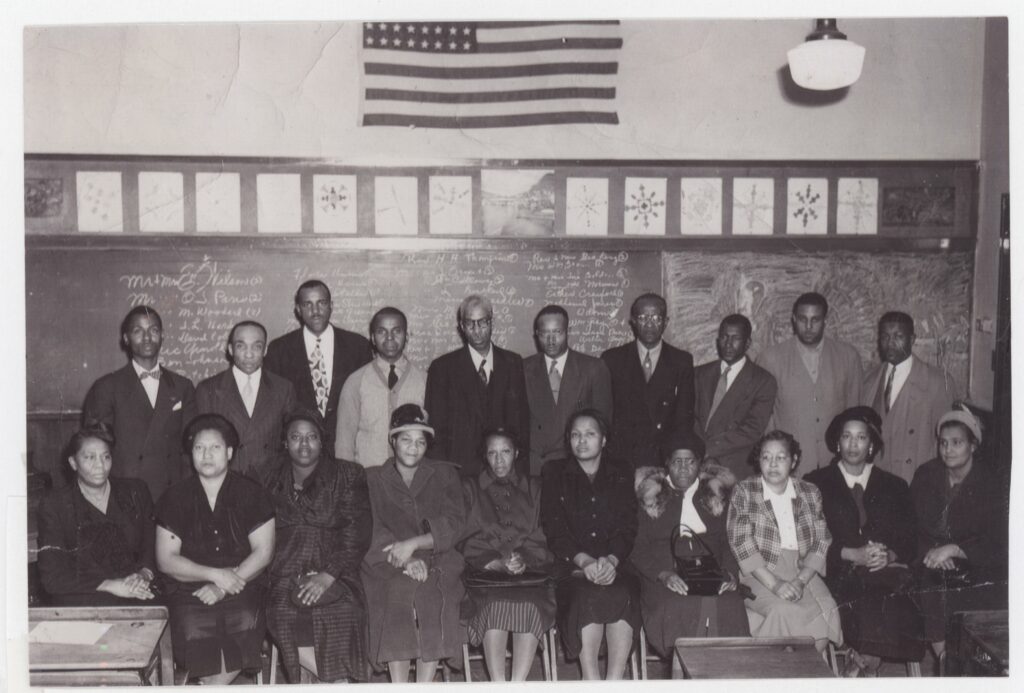
Front row L to R: Eloise Green, Mattie Pounds, Lillian Paris, Bessie Collins, Clara Adams, Magnolia Strickland, Viola Thomas, Leola Bryant, Daisy Ritchie, Grace Bolden. Back Row L to R: Steve Hall, Emory J. Lynch, Rev. William Peavy, William Brown, Elder George King, Rev. Ben L. Davis, Rev. Norman Spencer, Julius Harding, Willie Calloway, Elijah Norman. This picture was taken in Park School (one room only) in Chagrin Falls Park. Another committee of people who lived outside the community met with this committee to elect the Trustees of the Chagrin Falls Park Community Center. Chagrin Falls Historical Society & Museum Photograph Collection, 2017.57.1, donated by Harriet Bolden.
In 2019, the Community Center provided 32,194 meals, 42 workshops and empowered 94% of families to move towards their goals.
Chagrin Falls Park provides a community center for the health, recreation, education and general welfare to the residents of Chagrin Falls Park. Their mission is to empower individuals and families to reach their full potential and unify the local neighborhood and greater community. You can learn more about the community center by visiting their website.
